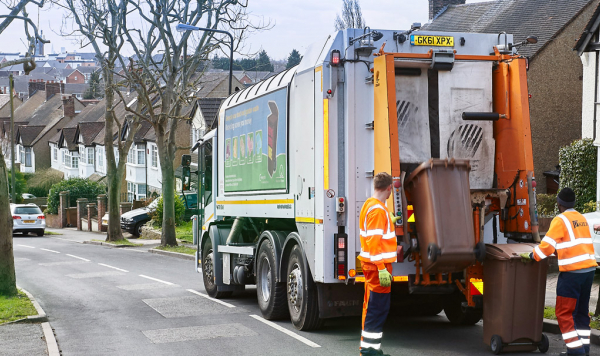Request
| What happens to our plastic waste recycling? 1)What is the relationship between Biffa and the NLWA? Do you monitor or oversee their practice and what is happening to the exported waste oversees? 2)How much of Waltham Forest’s waste plastic is actually exported oversees, and where does it end up? 3)I recently read that a new Combined Heat and Power plant is starting operation in Edmonton “EcoPark”. Is that plant run by the NLWA or by Biffa? Will it burn also plastic waste? How much percent of the total plastic waste is earmarked to be burnt? I remember about 20 years ago some Greenpeace activists climbed on top of a chimney in Edmonton, protesting against plastic being burnt there because of dioxin emissions. I trust that the new modern plant can filter out any dioxins? While I agree that it is better to burn our plastic locally, rather than dumping it in the world’s oceans, I still think that actually recycling it into new products would be a better solution. |
Response
1) What is the relationship between Biffa and the NLWA? Do you monitor or oversee their practice and what is happening to the exported waste oversees?
North London Waste Authority (NLWA) contracts with two companies to sort the mixed dry recycling (cans, paper, plastic etc.) collected by six of the north London borough councils, including Waltham Forest and then send that sorted material to reprocessors who will recycle it into something new. Biffa is therefore one of two of NLWA’s recycling contractors, the other being Bywaters in Bow. Details of NLWA’s contracts are available in the ‘contracts register’ on the website here: http://nlwa.gov.uk/governance-and-accountability/transparency-and-suppl…
NLWA monitors the MRF contractors by undertaking spot checks on the contractors' recyclate sales data to check that the recyclable material is being sold and that the Authority is receiving the appropriate proportion of income for the material sold. These checks also enable the Authority to verify that the material is actually being recycled.
Although it may be preferable for separated materials to be made into new products in the UK because it reduces the amount of transport involved and is ‘closing the recycling loop’ by using and recycling material in this country, both of the contractors that NLWA uses are commercial operations and markets will dictate whether better sales can be achieved from reprocessors in other countries or those in the UK; this will inevitably mean a proportion of separated material is sent abroad. The recycling gets sent to where there is a reliable and financially sound market for the materials. At present, much of the manufacturing industry that the UK relies on is in the Far East and therefore, some of the material has to be sent there.
The waste that is exported overseas is exported to reprocessors who make it into a range of new products, from kitchen appliances, to toys and packaging. The following web page on NLWA’s consumer website shows what happens to north London’s recycling and where it goes http://wiseuptowaste.org.uk/recycle/what-happens-to-my-recycling/
In 2018/19 financial year April to September 7% of plastic bottles were exported for recycling. This is due to import restrictions in the Far East and favourable market conditions in the UK to reprocess plastic bottles.
2) How much of Waltham Forest’s waste plastic is actually exported oversees, and where does it end up?
In the first 6 months of the financial year 2018/19 London Borough of Waltham Forest delivered 8,066 tonnes of mixed dry recycling for reprocessing. This was processed at our MRF contractors' facilities. Because Waltham Forest’s material is mixed up with that of the other five north London boroughs NLWA cannot be precise about the exact tonnage exported, although it will be in the region of 800t of plastic of which the Authority did receive an income. Unfortunately some of the plastics are contaminated and have to be disposed of.
The material that was exported overseas went to European and markets in South East Asia (not China). It is important to note that because recycling is traded on a global market the outlets for the material will change over time.
3) I recently read that a new Combined Heat and Power plant is starting operation in Edmonton “EcoPark”. Is that plant run by the NLWA or by Biffa? Will it burn also plastic
waste? How much percent of the total plastic waste is earmarked to be burnt? I remember about 20 years ago some Greenpeace activists climbed on top of a chimney in Edmonton, protesting against plastic being burnt there because of dioxin emissions. I trust that the new modern plant can filter out any dioxins?
While I agree that it is better to burn our plastic locally, rather than dumping it in the world’s oceans, I still think that actually recycling it into new products would be a better solution.
The new plant that is being built at the Edmonton EcoPark is a replacement for the existing energy-from-waste facility on the site. Further details are available here: http://northlondonheatandpower.london/ The current energy-from-waste facility is operated by LondonEnergy Ltd a company which is wholly owned by North London Waste Authority. North London Waste Authority will continue working with LondonEnergy Ltd towards a contract to manage the waste collected by the seven north London Boroughs and to operate the replacement Energy Recovery Facility at Edmonton EcoPark.
We do not ‘earmark’ any waste to be burnt. NLWA’s contracts with LondonEnergy Ltd and with FCC (who also have an energy recovery facility to which waste from north London is delivered by rail) for burning the material that is not put out for recycling by residents, i.e. these energy recovery facilities burn the waste that is left over after recycling. Our preference is to reduce the amount of waste that is produced in the first place; our second preference to recycle or compost it or send it for anaerobic digestion and only then to burn it to generate electricity. The replacement facility at Edmonton will also capture the heat from the process.
Because the new facility will burn waste that is left over after recycling it will contain some plastic, simply because not everyone puts out all of their plastic for recycling nor do they set it out for recycling all of the time. There are also some plastics such as the hard plastic, used to make children’s toys and hard plastic containers for example, which we cannot recycle. There is no longer a cost-effective market for recycling such goods. These types of plastic will therefore be included in the waste that’s left over for disposal and will therefore get burnt.
Over the past 40 years the existing plant at the EcoPark has benefitted from multi-million pound investments to ensure that it not only meets but exceeds current regulatory standards on emissions. As an example the current plant operates at almost 20% below permitted levels of nitrogen oxides one of the key emissions of the energy recovery process which contribute to air pollution. The new facility will operate at more than 60% below the permitted levels of nitrogen oxides.
However, by far the largest products emitted from the stack of an energy-from-waste facility are carbon dioxide and water vapour. These are released to the atmosphere under controlled conditions and do not cause any harm to human health. Other products arising from the production of energy include ash and particulates, the acid forming gases (including nitrogen oxides, sulphur oxides and hydrogen chloride), as well as dioxins.
Modern energy recovery facilities must be designed and operated to minimise the production and release of pollutants. They must be built with sophisticated pollution monitoring and control systems. These capture virtually all of the potential harmful emissions from the facility. The operating conditions and emissions from the process are tightly monitored, recorded and reported to the Environment Agency.
The performance of the new energy recovery facility will be regulated by the Environment Agency under the Environmental Permitting (England & Wales) Regulations 2016. The permit controls the operation of the facility and covers all aspects of the facility’s operation, for example,
• facility operating standards;
• types and quantities of waste allowed;
• how waste is to be handled and disposed of;
• strict emissions limits;
• how emissions are monitored;
• how emissions are reported;
• noise and vibration limits;
• environmental monitoring requirements;
• disposal (including recycling) routes for residues such as bottom and fly ash.
Environment Agency inspections are both scheduled and unannounced. All facilities publish their emissions monitoring data in their annual performance report and the Environment Agency has the power to close the plant if it breaches the permit condition including emissions limits.


